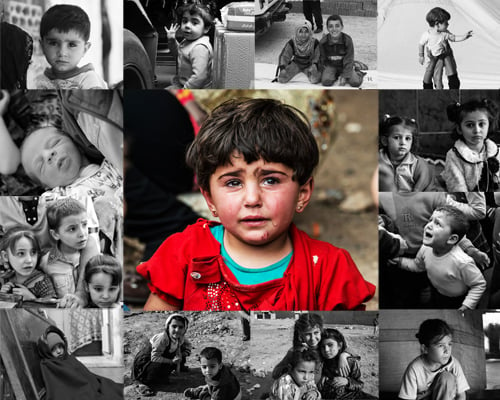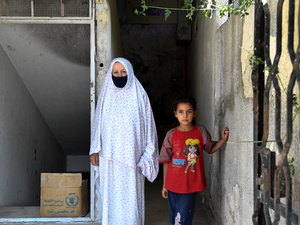One million refugee children mark shameful milestone in Syria crisis
One million refugee children mark shameful milestone in Syria crisis

Dream of the refugee children
“I want to be a paediatrician. Any child can come to me without money; I will not ask them for money or anything else. I will write them a prescription and give them medicine. I will also give them injections.” Aya talks about her dream in the war.
Aya is one of the million refugee children. With Syria’s war well into its third year, one million Syrian children have now been forced to flee their own homeland as refugees. Most have fled to Lebanon, Jordan, Turkey, Iraq and Egypt. One million refugee children – it closes to the total number of children aged under 18 in Hong Kong (as of mid-2012) [1]. That’s one million children scarred by trauma. Protecting these children from the very real threats of child labour, early marriage and sexual exploitation and trafficking has become the key challenge in the Syrian crisis.
“The Youth of Syria are losing their homes, their family members and their future. Even after they have crossed a border to safety, they are traumatised, depressed and in need of a reason for hope,” said UNHCR High Commissioner António Guterres. Children make up half of all refugees fleeing the conflict.
More than 3,500 of the children in Jordan, Lebanon and Iraq have crossed Syria’s border either unaccompanied or separated from their families. The crisis has resulted in one of the UNHCR’s largest-ever humanitarian operations. The UNHCR ensures that all refugee families and children live in some form of safe shelter. Meanwhile, the UNHCR has registered all one million children, assuring each of them retains their identity. The Agency helps babies born in exile get birth certificates, preventing them from becoming stateless. Out of the one million Syrian child refugees, 75% of them are under the age of 11.

Beating disability for an education and a future
Diyaa, another 8-year-old refugee from Syria, studies in a school in Lebanon. Diyaa’s shorts may have room for two legs, but he has only one. Diyaa lost his leg in a bomb explosion a year ago. Every day he must negotiate the long stairs to the classroom. He climbs each step using two crutches for the sake of his education – and future. “I want to go to school,” he said, eyes burning brightly. Diyaa’s teacher looks at him as she speaks. “We were worried he wouldn’t be able to go up the steps,” she says. “[But] Diyaa is one of the most confident children in class. He doesn’t allow his injury to be a disability. He does it without anyone’s help.”
For both the one million refugee children and for the future of Syria, the UNHCR and its partners work to bring aid to the vulnerable children who are at serious risk inside Syria. We continue to work to meet the urgent needs of the refugee camps and to assist generous host families in the neighbouring countries, such as Lebanon.
© UNHCR / Bathoul Ahmed
This year alone, more than 10 million people have had their drinking water provided. Some 2 million children have been immunised against killer diseases. More than 250,000 children have been given access some form of education. Nearly 170,000 have received psychosocial assistance. Whether in camps, villages or cities, most live in a basic, but safe shelter.
Act – for the future of Syria
In fact, the needs of Syria’s children are growing faster than our capacity to meet them. At the time of going to press, only 40% of the required funding for The Syria Regional Refugee Response Plan is accounted for.
More than US$5 billion has been requested in order to address the Syrian crisis, with education, health care and other services for children and child members of host communities desperately required. More resources need to be devoted to developing strong networks to identify refugee children at risk and to provide them, and their host communities, with support.
While intensified efforts are needed to find a political solution to the crisis in Syria, the opposing sides in the conflict must stop targeting civilians and cease their policies of child recruitment. Children and their families must be safe to leave Syria and borders must remain open so they can cross to safety. Those who fail to meet these obligations under international humanitarian law should be held fully accountable for their actions.
Your support
As a global citizen, we ask that you help us support the most vulnerable members in our society, and boost both their spirits and their chances of survival. You may:
1. Donate now: You can donate to help the children in Syria through the website of UNHCR. The fund raised will be used in responding the critical needs of refugee children in education, health care and other services, supporting the humanitarian operation in Syria.
2. Pay attention to the Syria emergency: You may “like” our UNHCR Facebook to share the living stories, to let more people know about the needs in the emergency.
[1] Population by Age Group and Sex, Census and Statistics Department:
http://www.censtatd.gov.hk/hkstat/sub/sp150.jsp?tableID=002&ID=0&produc…












